IYUZEH™ (Latanoprost Ophthalmic Solution) 0.005%, The First and Only Preservative-Free Latanoprost Ophthalmic Solution, Demonstrated Similar IOP Lowering Efficacy with a Favorable Safety Profile when Compared to Xalatan® in Patients with Primary Open-Angle Glaucoma (POAG) or Ocular Hypertension (OHT)
03/03/2023
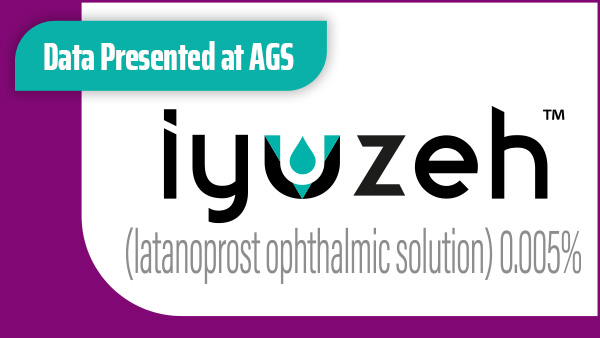
LEXINGTON, Massachusetts – March 3, 2023 – Thea Pharma, Inc. (“Thea”), the U.S. subsidiary of Europe’s leading independent pharmaceutical company, Théa, dedicated to the research, development, and commercialization of ophthalmic products, announced the presentation of Phase III data on IYUZEH (latanoprost ophthalmic solution) 0.005% by Jason Bacharach, MD at the 2023 American Glaucoma Society (AGS) Annual Meeting. The large, pivotal clinical trial demonstrated comparable efficacy of preservative-free IYUZEH™ (latanoprost ophthalmic solution) 0.005% over brand-name Xalatan® (Pfizer Inc., New York, NY, USA) (latanoprost ophthalmic solution) 0.005%, containing the preservative benzalkonium chloride (BAK), in patients with POAG or OHT.
“We compared IYUZEH to Xalatan in 334 patients over 84 days,” said Dr. Bacharach, Founder and Director of Research at North Bay Eye Associates in Petaluma, California. “IYUZEH demonstrated similar clinically meaningful reductions in IOP from baseline (≤18 mmHg) with fewer ocular adverse events (13.9% vs. 22.5%). Less than 2% of patients in the IYUZEH group experienced instillation site pain, pruritis or conjunctival hyperemia.”
“The harmful effects of preservatives on ocular surface health are well documented,” Susan Benton, President of Thea Pharma, Inc., added, “We have solved the challenge of creating a room temperature-stable, efficacious, and preservative-free latanoprost eye drop. IYUZEH brings the IOP-lowering efficacy of latanoprost and eliminates the exposure to preservatives for patients with glaucoma or ocular hypertension.”
IYUZEH has been marketed outside of US under the brand name MONOPROST® in 46 countries. About 1.5 million patients12 are currently treated with MONOPROST®, which was launched 10 years ago. Ophthalmologists and optometrists in the U.S. market can thus be confident in the efficacy, safety, and tolerability of prescribing IYUZEH to their patients with POAG or OHT when we launch later this year.
AGS 2023 attendees and virtual registrants may view Dr. Bacharach’s presentation as part of the poster on-demand section of the meeting.
About IYUZEH™
IYUZEH™ (latanoprost ophthalmic solution) 0.005%, an opalescent, white to slightly yellow ophthalmic solution, is a topical formulation of latanoprost that is indicated for the reduction of elevated intraocular pressure (IOP) in patients with open-angle glaucoma (OAG) or ocular hypertension (OHT). IYUZEH™ does not contain a preservative – it is the first and only preservative-free formulation of latanoprost, the most prescribed prostaglandin F2α analogue (PGA) in the United States. The recommended dosage of IYUZEH™ is one drop in the affected eye(s) once daily in the evening. If one dose is missed, treatment should continue with the next dose as normal. Reduction of the IOP starts approximately 3 to 4 hours after administration and the maximum effect is reached after 8 to 12 hours. IOP reduction is present for at least 24 hours.
In the two clinical trials conducted with IYUZEH™ (latanoprost ophthalmic solution) 0.005%, the most frequently reported ocular adverse reactions were conjunctival hyperemia (34%) and eye irritation (19%) compared to XALATAN, the preserved 0.005% latanoprost reference product which reported conjunctival hyperemia (37%) and eye irritation (31%).
IMPORTANT SAFETY INFORMATION
CONTRAINDICATIONS
Known hypersensitivity to latanoprost or any other ingredients in this product.
WARNINGS AND PRECAUTIONS
Pigmentation: Topical latanoprost ophthalmic products, including IYUZEH™ have been reported to cause changes to pigmented tissues. The most frequently reported changes have been increased pigmentation of the iris, periorbital tissue (eyelid), and eyelashes. Pigmentation is expected to increase as long as latanoprost is administered.
The pigmentation change is due to increased melanin content in the melanocytes rather than to an increase in the number of melanocytes. After discontinuation of latanoprost, pigmentation of the iris is likely to be permanent, while pigmentation of the periorbital tissue and eyelash changes have been reported to be reversible in some patients. Patients who receive treatment should be informed of the possibility of increased pigmentation. The long-term effects of increased pigmentation are not known.
Iris color change may not be noticeable for several months to years. Typically, the brown pigmentation around the pupil spreads concentrically towards the periphery of the iris and the entire iris or parts of the iris become more brownish. Neither nevi nor freckles of the iris appear to be affected by treatment. While treatment with IYUZEH™ can be continued in patients who develop noticeably increased iris pigmentation, these patients should be examined regularly.
Eyelash Changes: Latanoprost ophthalmic products, including IYUZEH™ may gradually change eyelashes and vellus hair in the treated eye; these changes include increased length, thickness, pigmentation, the number of lashes or hairs, and misdirected growth of eyelashes. Eyelash changes are usually reversible upon discontinuation of treatment.
Intraocular Inflammation: IYUZEH™ should be used with caution in patients with a history of intraocular inflammation (iritis/uveitis) and should generally not be used in patients with active intraocular inflammation because inflammation may be exacerbated.
Macular Edema: Macular edema, including cystoid macular edema, has been reported during treatment with latanoprost ophthalmic products, including IYUZEH™. IYUZEH™ should be used with caution in aphakic patients, in pseudophakic patients with a torn posterior lens capsule, or in patients with known risk factors for macular edema.
Herpetic Keratitis: Reactivation of herpes simplex keratitis has been reported during treatment with latanoprost. IYUZEH™ should be used with caution in patients with a history of herpetic keratitis. IYUZEH™ should be avoided in cases of active herpes simplex keratitis because inflammation may be exacerbated.
Contact Lens Use: Contact lenses should be removed prior to the administration of IYUZEH™ and may be reinserted 15 minutes after administration.
ADVERSE REACTIONS
The following adverse reactions have been reported with the use of topical latanoprost products: iris pigmentation changes, eyelid skin darkening, eyelash changes (increased length, thickness, pigmentation, and number of lashes), intraocular inflammation (iritis/uveitis), and macular edema, including cystoid macular edema.
DRUG INTERACTIONS
The combined use of two or more prostaglandins, or prostaglandin analogs including IYUZEH™ is not recommended. It has been shown that administration of these prostaglandin drug products more than once daily may decrease the IOP lowering effect or cause paradoxical elevations in IOP.
For more information about IYUZEH™, please visit https://www.iyuzeh.com.
For Full Prescribing Information, please visit https://iyuzeh.com/wp-content/uploads/2022/12/IYUZEH-Full-Prescribing-Information.pdf
About Primary Open-angle Glaucoma
The American Glaucoma Society (AGS) states that glaucoma is a common ophthalmic disorder characterized by typical optic nerve damage and vision loss. It is most associated with elevated or dysregulated intraocular pressure (IOP), although there is evidence that other factors contribute to the disease.1 Glaucoma is a leading cause of irreversible blindness worldwide. Its prevalence in the United States is approximately 1,900 per 100,000 persons over age forty, and the condition is responsible for upwards of 9 million clinic visits each year.2-4 In the United States, where annual spending on optic nerve disorders is estimated at $5.8 billion annually,5 glaucoma is a significant public health concern.
About Ocular Hypertension
Mean IOP slowly rises with increasing age. Age older than 40 years is considered a risk factor for the development of OHT and POAG.6 OHT, a common condition, is a leading risk factor for the development of OAG.7 OHT is defined as IOP consistently greater than 21 mmHg (in at least one eye) and the absence of clinical signs of glaucoma.8 The risk of developing glaucoma increases with increasing IOP.9 Population studies such as the Framingham, Beaver Dam, Baltimore, Rotterdam, Barbados, and Egna-Neumarkt studies estimate that 4-10% of the population older than 40 years will have IOP levels of 21 mmHg or higher without detectable signs of glaucomatous damage. OHT has a 10-15 times greater prevalence than POAG.10 The use of topical IOP-lowering medications reduced the risk of glaucoma development from 9.5% in the control group to 4.4% in the intervention group.11
About Théa Group
Théa is an independent pharmaceutical company specialized in the research, development, and commercialization of eye-care products. Based in Clermont-Ferrand, France, it has thirty-five affiliates & offices in Europe, North and South America, North Africa, and the Middle East. Today, its network includes more than 1,600 employees, and its products are available in 75 countries around the world. In 2021, Théa had global revenues of approximately $773 million. The independent and family-owned and run group, founded from a Research and Development start-up by Henri Chibret, has been chaired since 2008 by Jean-Frédéric Chibret, his nephew.
To learn more about Théa Group, visit https://www.laboratoires-thea.com/en/Group
About Thea Pharma, Inc.
Established in Lexington, Massachusetts in 2019, Thea Pharma, Inc., is the United States subsidiary of Théa. Its product offering is comprised of a portfolio of seven leading eye-care products that are regulated or approved by the U.S. Food and Drug Administration (FDA), including Zioptan®, AcellFX™, Cosopt®, Cosopt® PF, Azasite®, Akten®, and Betimol®, iVIZIA dry-eye drops and eyelid hygiene products, and now IYUZEH™. By focusing our passion and expertise within the U.S. market, Thea Pharma’s goal is to deliver uncompromising care that allows all stakeholders to envision the future of ophthalmic treatment with eyes wide open.
To learn more about Thea Pharma, Inc., visit https://theapharmainc.com.
Thea Pharma, Inc. – US Media Inquiries Please Contact:
PRECISION effect
Katey McCarthy
katey.mccarthy@precisionvh.com
+1 802.598.3408
Théa Group – Global Media Inquiries Please Contact:
Théa
Julie Ahmed
+33473989521
References:
1. The American Glaucoma Society (AGS). Unmet needs in the detection, diagnosis, monitoring, treatment, and understanding of primary open angle glaucoma. 2021; 11. https://www.americanglaucomasociety.net/about/statements. Accessed March 1, 2023.
2. Friedman DS, Wolfs RC, O’Colmain BJ, et al. Prevalence of open-angle glaucoma among adults in the United States. Arch Ophthalmol. 2004;122(4):532–538. doi:10.1001/archopht.122.4.532.
3. Schappert SM. Office Visits for Glaucoma: United States, 1991-92. Vital and Health Statistics, Centers for Disease Control and Prevention / National Center for Health Statistics. 1995; March, No. 262.
4. Lee PP, Walt JG, Doyle JJ, et al. A multicenter, retrospective pilot study of resource use and costs associated with severity of disease in glaucoma. Arch Ophthalmol. 2006;124(1):12–19. doi:10.1001/archopht.124.1.12.
5. Leske MC, Connell AM, Wu SY, et al. Distribution of intraocular pressure. The Barbados Eye Study. Arch Ophthalmol. 1997 Aug. 115(8):1051-7.
6. Wittenborn JS, Zhang X, Feagan CW, et al. The economic burden of vision loss and eye disorders among the United States population younger than 40 years. Ophthalmology. 2013;120(9):1728–35. https://doi.org/10.1016/j.ophtha.2013.01.068.
7. Kass MA, Heuer DK, Higginbotham EJ, et al. Assessment of Cumulative Incidence and Severity of Primary Open-Angle Glaucoma Among Participants in the Ocular Hypertension Treatment Study After 20 Years of Follow-up. JAMA Ophthalmol. 2021;139(5):558–566. doi:10.1001/jamaophthalmol.2021.0341
8. Burr JM, Botello-Pinzon P, Takwoingi Y, Hernandez R, Vazquez-Montes M, Elders A, et al. Surveillance for ocular hypertension: an evidence synthesis and economic evaluation. Health Technol Assess 2012;16(29):1-271, iii-iv.
9. Burr JM, Mowatt G, Hernandez R, Siddiqui MAR, Cook J, Lourenco T, et al. The clinical effectiveness and cost-effectiveness of screening for open angle glaucoma: a systematic review and economic evaluation. Health Technol Assess 2007;11(41):iii-iv, ix-x, 1-190.
10. Chihara E. Assessment of true intraocular pressure: the gap between theory and practical data. Surv Ophthalmol. 2008 May-Jun. 53(3):203-18.
11. Kass MA, Heuer DK, Higginbotham EJ, et al. The Ocular Hypertension Treatment Study: A Randomized Trial Determines That Topical Ocular Hypotensive Medication Delays or Prevents the Onset of Primary Open-Angle Glaucoma. Arch Ophthalmol. 2002;120(6):701-713. doi:10.1001/archopht.120.6.701.
12. Théa Internal sales 2022
0300-AP-01
More News
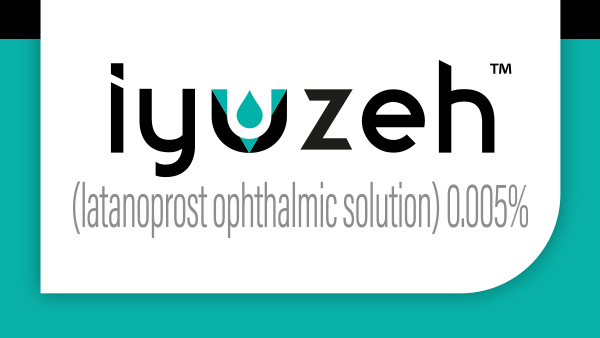
IYUZEH™ (latanoprost ophthalmic solution) 0.005%, the first and only preservative-free formulation of latanoprost, the most prescribed prostaglandin F2α analogue (PGA), is now available in the U.S.
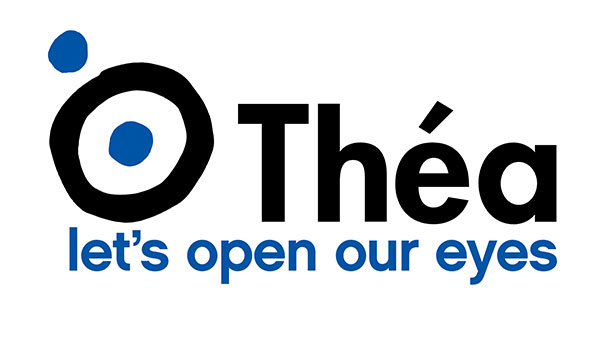
Thea Pharma Inc. Launches Preservative Freedom Coalition to Advocate for Preservative-free Eye Care
05/31/2023
The Glaucoma Foundation, The Intrepid Eye Society, National Medical Association Ophthalmology Section, and Real World Ophthalmology Unite with Thea to Help Preserve Patient Eye Health WALTHAM, Mass., May 30, 2023 /PRNewswire/ — Thea Pharma Inc. (“Thea”), the U.S. subsidiary of Europe’s leading independent ophthalmic-focused pharmaceutical company, Laboratoires Théa, today announced the launch of the Preservative Freedom Coalition to raise awareness of unmet […]

Thea Portfolio of Products Acquired from Akorn are not Affected by this Recall WALTHAM, Mass., April 28, 2023 /PRNewswire/ — Thea Pharma Inc. (“Thea”), the U.S. subsidiary of Europe’s leading independent pharmaceutical company, Laboratoires Théa, dedicated to the research, development, and commercialization of ophthalmic products, is responding to the recent statement related to the Akorn […]
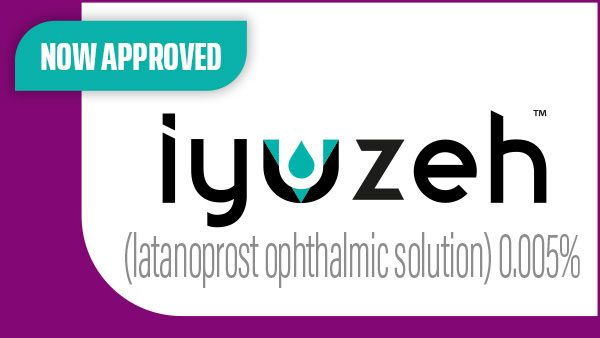
IYUZEH™ (latanoprost ophthalmic solution) 0.005% is the first and only preservative-free formulation of latanoprost, the most prescribed prostaglandin F2α analogue (PGA) in the United States LEXINGTON, Massachusetts – December 14, 2022 – Thea Pharma, Inc. (“Thea”), the U.S. subsidiary of Europe’s leading independent pharmaceutical company, Laboratoires Théa, dedicated to the research, development and commercialization of ophthalmic products, […]
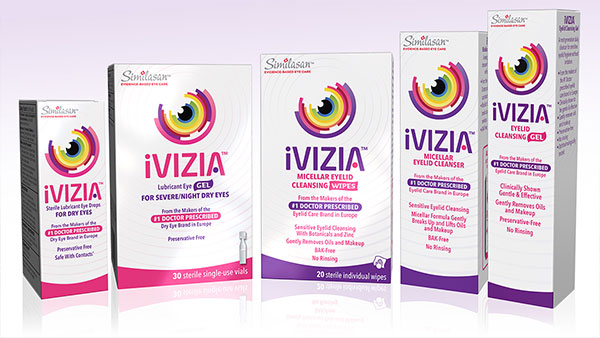
Théa Pharma announced the availability of the iVIZIA line of over-the-counter (OTC) eye care products in the United States. The iVIZIA OTC product line includes lubricating eye drops, lubricating eye gel, and three options for daily hygiene of sensitive eyelids. iVIZIA eye drops offer preservative-free extended relief and ocular surface protection to patients with any type of […]

LEXINGTON, MASSACHUSETTS – March 9, 2022 – Théa Pharma Inc. (“Théa”), the US subsidiary of Europe’s leading independent pharmaceutical company specializing in the research, development and commercialization of eye care products, today announced the completion of its previously announced acquisition of seven branded ophthalmic products from Akorn Operating Company LLC. The transaction expands Théa’s role […]

CLERMONT-FERRAND, FRANCE – January 28, 2022 – Laboratoires Théa SAS (“Théa”), Europe’s leading independent pharmaceutical company specializing in the research, development, and commercialization of eye-care products, today announced an agreement to purchase seven branded ophthalmic products from Akorn Operating Company LLC. The transaction will make Théa a best-in-class provider of products designed to fill the […]

Théa, the leading European pharmaceutical group in ophthalmology (excluding the retina market), increases its research and clinical trials capacity by doubling its innovation space footprint at the headquarters in Clermont-Ferrand.
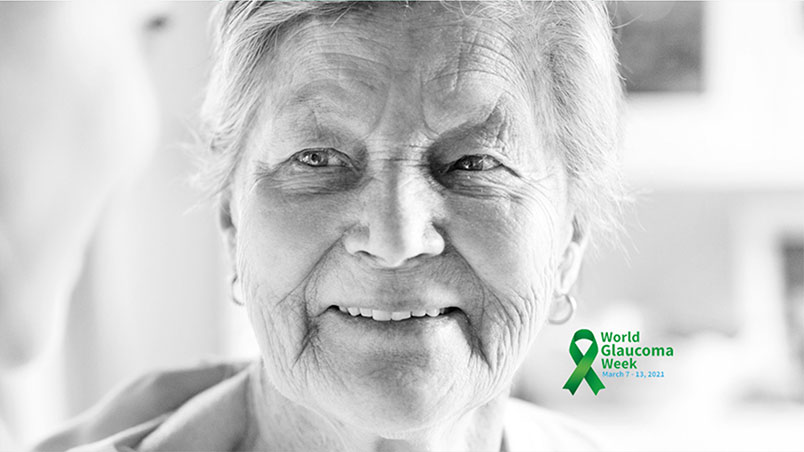
World Glaucoma Week 2021
03/07/2021
World Glaucoma Week (March 7-13) is a global initiative of the World Glaucoma Association (WGA) to raise awareness on glaucoma. Glaucoma is a chronic eye disease that has become the 2nd leading cause of blindness in the world.
